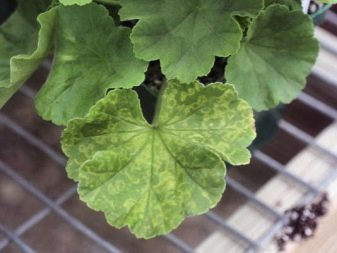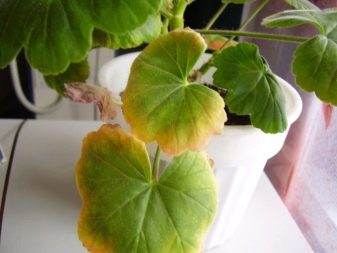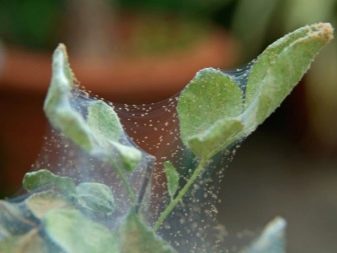Tall and stunted geranium varieties
Geranium (GERANIUM) belongs to the Geraniev family, the love of gardeners for these plants is explained by the beauty of their leaves, long and abundant flowering, undemandingness.
In cultivation, mainly plants of subalpine meadows of the Pyrenees, Apennines, Balkans, Carpathians and the Caucasus are used.
As you can see in the photo, most species and varieties of geraniums are perennial rhizome grasses with a rosette of dissected leaves, above which almost leafless flower stalks with one or two flowers rise.
For convenience, geraniums can be conventionally divided into two groups: 1. High (over 50 cm); 2. Stunted (10-50 cm).
Tall geraniums:
Marsh geranium (G. palustre) - with purple flowers; Georgian (G. ibericum) - purple flowers with purple veins.
Geranium red-brown (G. phaeum) - with dark flowers and a red pattern that appears on the leaves in summer, the leaves overwinter; and blood red (G. sanguineum) - with red flowers and hibernating leaves.
Forest geranium (G. sylvaticum) - with purple flowers.
Varieties:
Alba, Striatum.
As you can see in the photo of the geranium variety "Mayflower", the plant has bluish flowers.
Meadow geranium (G. pratense) - lilac-blue flowers, variety "Splish Splash" has variegated flowers.
Small-grained geranium (G. psilostemon) - bright crimson flowers with a black eye; flat-petal (G. platypetalum) - blue-violet flowers.
Pay attention to the photo and description of the geraniums of the undersized group. G
Himalayan (G. hymalayense) -blue-violet flowers with reddish veins, variety "Johnson" s "blue flowers.
Dalmatian geranium (G. dalmaticum) - flowers are pale pink, "Alba" has white flowers; and large-rhizome (G. macrorrhizum) - is distinguished by the presence of a long dark rhizome located on the soil surface and bright purple flowers.
Ash geranium (G. cinereum) - lilac-pink flowers; and Pyrenean (G. pyrenaicum) - height 25 cm, juvenile.
Renard's geranium (G. renardii) is the most original geranium with olive green leaves, on which a red pattern appears by the middle of summer, and pale flowers with purple veins.
Varieties:
"Insversen" - purple-pink flowers, "Spessart" - white pink.
Look at the photo of the Endris species (G. endressii) - the flowers of this plant are relatively small, pink with dark veins and a pearlescent tint.
Growing conditions. All tall geraniums are light-loving plants, except for the red-brown city, the blood-red city and the forest city, which grow well and bloom profusely both in the sun and in
penumbra. They need fertile, well-hydrated soils.
Reproduction. All geraniums are propagated by dividing the bush (early spring or late summer) and seeds (sowing before winter or early spring). Seeds germinate quickly, seedlings bloom in the second year.
Planting density of tall geraniums - 5 pcs. per 1 m2, undersized - 12 pcs. per 1 m2.
Growing problems, diseases and pests
Australia Pelargonium has specific diseases. It can also be destroyed by pests and parasites. Pelargonium australian pink rosebud leaves turn yellow due to lack of light or too dry air in the room. To eliminate these symptoms, you need to often spray the flowers and move the pot to a place with good lighting. Sluggish and unhealthy flowers can be due to overflow and stagnation of water in the root system. To eliminate the symptoms, Pelargonium swanland pink is not watered for some time.

Pelargonium australian pink variety
The rapid wilting of flowers may appear due to the presence of a fungus that destroys the flower. It is treated with Fitosporin. Brown spots indicate bacterial damage. The plant must be transplanted into another land and treated with fungicides. Insecticides will help control aphids.
Additional Information! To make sure that there is a danger to the flower in the form of parasites or fungi, you need to analyze the condition of the leaves and flowers. In a healthy flower, leaves should not be lethargic and dull with unhealthy spots.
Common diseases include the fungus Botrytis, which begins to develop due to over-watering. It manifests itself in the form of spots and a gray cannon on the foliage, and therefore they quickly fall off. To save the plant, you need to cut off all damaged branches and leaves, spray the plant with preparations from the fungus.
Breeding features
This flower propagates vegetatively:
- cuttings;
- sheet plate;
- fragment of the sheet.
Sheet
The reproduction process by a leaf plate and a leaf fragment are similar to each other:
- The grower should choose a large, healthy leaf without defects. Then make cuts with a sharp knife, as if dividing the sheet itself into triangular fragments.
- To prevent these cuts from rotting, they are sprinkled with ash or activated carbon.
- The platinum plate is slightly deepened into the ground and covered with a jar until new leaves appear.
Cuttings
For planting, young shoots are selected, which, after cutting, are exposed to fresh air for drying. Cuttings are selected on which there will be at least three leaves.
You can put the cuttings in water until new roots appear on them, or you can immediately plant them in the ground, but at the same time treat them with a growth stimulant.
Seeds
There is also seed reproduction. It is not as fast as vegetative, but sometimes you have to resort to this particular method of reproduction.
- For planting, the seeds are sown on the ground, lightly crush them with earth.
- The soil is sprayed with a spray bottle.
- Then cover the seed with glass for a month.
- After this time, the first shoots will appear, which can already be dived.
To learn more about other varieties and types of pelargonium, read about rosebud, fragrant, dwarf, Pak, garden, zonal, Rococo, Stellar, South.
Pelargonium of Pink varieties is considered a female flower, therefore it is given to girls and women in recognition of her tenderness and romance.
How to care for April snow at home
In order for April Snow Pelargonium to develop normally and bloom magnificently, it must be properly looked after.
Illumination and temperature conditions
Culture needs bright and diffused lighting. In winter, there may be a need for additional lighting.
Almost all varieties of pelargonium require high temperatures. At the same time, + 17-18 degrees is enough for the April Snow culture. In winter, the parameters should be + 12-15 degrees at all.
Watering rules and humidity
The plant needs systematic moistening of the soil. Moreover, it should be moderate. The culture has gentle roots. With an excess of moisture, there is a risk of decay processes.
Important! In summer, watering should be plentiful, especially during drought. In winter, the amount of water must be significantly reduced.
The need for watering is reduced in such situations:
- growing in a plastic container;
- state of winter dormancy;
- first week after transplant;
- decrease in temperature parameters, winter period of time;
- high humidity, lack of sufficient lighting;
- insufficient ventilation in the room.
In any case, the shrub should be watered at the root. To better moisten the soil, it is recommended to pour water into the pan. It is forbidden to allow excess moisture. This must be controlled by the condition of the soil. If it is dry at a depth of 1 cm, the soil should be watered.
Top dressing and soil quality
For fertilizing pelargonium, it is recommended to use combined formulations. They are sold in all flower shops. You need to make top dressing only in the summer. This should not be done in winter.
Flower container size
The culture does not require a large capacity. The faster the plant develops, the more space it requires. Therefore, the transplant is carried out in a looser pot.
Pruning and replanting
It is recommended to form the bush systematically. In this case, you should cut and pinch the shoots. The plant should be pruned in late February or early March.As it develops, the regrown shoots should be shortened.
The plant must be properly pruned, taking into account the basic rules of the procedure.
Before transplanting, the soil must be disinfected. This can be done in different ways:
- calcine in the oven or in a frying pan;
- to freeze;
- water the ground with a solution of potassium permanganate;
- water the soil with fungicides.
To transplant a crop, it must be removed from the old pot, shaken off the soil and transferred to a larger container.
Important! During disinfection, there is a risk of death of not only harmful, but also beneficial bacteria. Therefore, it is so important to monitor the state of the culture and periodically feed it.
Botanical description, history of origin and approximate cost
A distinctive characteristic of all Pelargoniums is the shape of their inflorescences. Their petals acquire a longitudinal shape. As it were, the two upper petals are located separately, over time they slightly grow together with each other. The other three petals remain below, they are evenly spaced relative to each other.
On plants of natural origin, flowers are quite simple in structure and to the touch. But among the hybrid varieties, there are also terry ones, moreover, they can be of the most diverse forms. Flowers are collected in inflorescences that resemble umbrellas in shape.
Leaf plates are usually ivy-shaped in shape, sometimes you can find leaves with jagged edges. Fern-like leaves or with split ends are much less common. The color of the leaf plates is unique: it can be not only one-color, but also two- and even three-color.
Most of all pelargoniums came to us from the Republic of South Africa. These plants came to Europe in the 17th century. The first country in which the Pelargoniums appeared was Holland. This flower was brought there by local botanists as a medicine.
The described plant is sold in stores in several forms:
- seeds (the price of one bag will fluctuate around 100 rubles);
- small cuttings (you can buy them for 100-200 rubles);
- a ready-made flowering plant (its cost is about 300 rubles).
Diseases and pests
Both diseases and pests from which tulip geranium suffers are characteristic of any other members of the geranium family. We are talking about spider mites, gray rot, mealybug, rust and whitefly.
The fact that the plant is sick can be determined by the condition of the leaves and stem. If white circles appear on the plates, we are talking about rust. Gray formations on the underside of the leaf are characteristic of gray mold. In the case when the color of the leaves and stems changes to reddish, most likely, the geranium is simply frozen.


Whitefly attack is accompanied by yellowing and falling of leaves. It will be possible to fight it with the help of insecticides, for example, the drug Fitoverm or Aktara. The same means will help fight the spider mite, the effect of which is accompanied by the appearance of a thin cobweb on the leaves. White bloom and sugary discharge are characteristic of mealybugs. You can get rid of it if you just wipe the geranium leaves with a cotton pad soaked in soapy water.
It is also important not to create additional stress for pelargonium by transplanting from a pot to a flower bed. Of course, regular inspection of the bush, as well as the use of a sterilized substrate, will help.
The latter can be ensured by calcining the earth in the oven, pouring it over with boiling water, or treating it with a solution of potassium permanganate. We must not forget about the creation of a drainage layer, for example, from expanded clay or pieces of a ceramic container.


The results of cuttings of geraniums, the rules of transplantation and care, see below.


